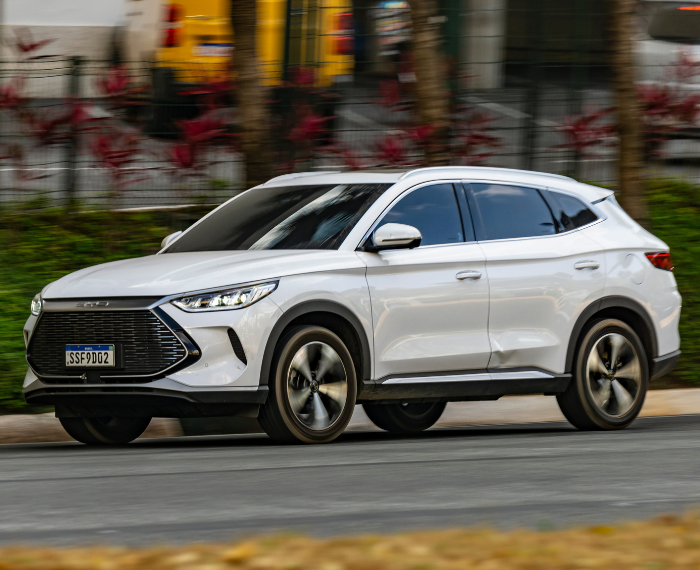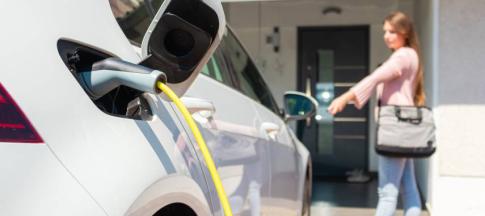
The government is planning to end new petrol, diesel and hybrid vehicle sales by 2035 – or even sooner – as the country pushes for a net zero carbon emissions figure by 2050.
This target date presents a set of challenges – not just for car manufacturers, but also to create an infrastructure able to cope with tens of millions of electric vehicles (EVs).
Hybrids, which are partially electrified vehicles and still use an internal combustion engine, are a good stepping-stone between 100% electric car and conventional petrol and diesel-powered vehicles.
Choosing the right hybrid car for you

Hybrids come in all shapes and sizes, from city cars to hatchbacks, and SUVs to sports cars.
It's estimated that three out of five journeys under five miles are currently made by car, ideal for plug-in hybrids, which often have an electric-only range of around 30 miles.
Most affordable pure electric cars, including the Renault Zoe, Nissan Leaf and Hyundai Ioniq, have a real-world range of around 150 miles.
If you want to approach the 300-mile mark, you'll have to pay closer to £40,000 or above for premium cars such as the Tesla Model S and Jaguar I-Pace.
For many, hybrids are a good compromise between 100% electric cars with limited range and traditional petrol and diesel-powered vehicles.
Different types of hybrid cars
In theory, hybrid cars are capable of unbelievable economy and low CO2 emissions, but in the real world they’re only zero emission for short trips and rely on their less efficient combustion engines for longer journeys.
What makes hybrids a little more complicated is there are three different types:
- Mild hybrid
- Self-charging hybrid
- Plug-in hybrid (PHEV)
Mild hybrids
A mild hybrid is the most basic form of electrification where cars use a small battery and electric motor to assist the combustion engine.
The battery is recharged via harvesting power otherwise wasted during deceleration. A mild hybrid can’t be driven using electric-only power, unlike a self-charging or plug-in hybrid.
Examples of mild hybrids include versions of the Suzuki Vitara, Ford Puma, Land Rover Discovery Sport, Fiat 500 and Kia Sportage.
What’s it like to drive a mild hybrid?
A mild hybrid is much the same as a conventional car to drive.
You might notice the engine stops more often thanks to the assistance from the electric motor, while the power boost from the electric motor results in better acceleration.
In fact, you may notice it’s a little smoother because pulling away from a standstill is easier, and the motor assistance makes gear changes in some hybrid cars slicker.
Self-charging hybrids
A self-charging or full hybrid is a vehicle that’s equipped with an electric motor and a slightly larger battery than a mild hybrid.
The technology seamlessly selects the best power source on your behalf (petrol/diesel or electric).
They can usually be driven for a mile or two in electric-only mode, and again, the battery is charged during braking.
Examples include the Toyota Corolla, Lexus UX, Kia Niro Hybrid, Hyundai Ioniq Hybrid.
What’s it like to drive a self-charging hybrid?
Again, very similar to driving a conventional petrol or diesel car. Simply start the engine, select D for Drive, pull away and enjoy the drive.
Depending on which manufacturer you choose, you may also have drive mode options to focus on economy or sportier handling, for instance.
Plug-in hybrids (PHEVs)

A plug-in hybrid vehicle, or PHEV, has a larger battery pack which can be charged during braking and coasting, as well as at home or via public charge points.
They can usually be driven for some 30 miles in pure electric mode, meaning you use no fuel on short commutes.
Examples include the Mitsubishi Outlander PHEV, BMW 330e, MINI Countryman PHEV, Audi Q7 e-tron and Mercedes-Benz A 250e.
What’s it like to drive a plug-in hybrid?
Again, a PHEV is just like driving a standard petrol or diesel car.
Depending on the car you choose, you can keep it simple or learn to use regenerative braking to slow the car in non-emergency situations (as you approach a roundabout, for instance) to increase the amount of charge going back into the battery.
And of course, in electric mode it's just like driving an EV – no tailpipe emissions and whisper-quiet.
The benefits of hybrid cars
Environmentally friendly
On average, hybrid cars produce 90% fewer emissions than traditional models.
This is because these vehicles have twin-powered engines, so they consume less fuel and emit less CO2 compared to diesel- or petrol-powered cars.
Consequently, hybrid cars are cleaner than petrol or diesel engines and have better fuel mileage, making it an environmentally friendly alternative to conventional models.
A key problem with plug-in hybrids (PHEVs) is drivers not keeping them charged. Without regular charging, you might as well just have a petrol or diesel car as you aren’t benefiting from the electric motor.
Driver behaviour also affects a hybrid’s green credentials. Accelerating hard can cause the engine to kick in on some PHEVs.
Better fuel economy
Mild hybrids don't use as much fuel as regular cars at certain points during a drive, so they can improve fuel efficiency.
Self-charging hybrid tech reduces the effort the petrol/diesel engine needs to make while accelerating, cutting fuel consumption.
PHEVs are great if you have a short commute – if you can just use battery power, a plug-in hybrid uses no fuel. On longer journeys the electric motor assists the engine, resulting in a lower overall MPG.
Cheaper to run
Hybrid cars are considered to be more affordable to run than their gas-powered counterparts.
This is because they have an electric motor and battery, in addition to an internal combustion engine, so they use less fuel and, as a result, you can make significant savings on fuel costs.
As well as saving money on fuel, lower CO2 emissions could also mean a reduced road tax (VED) rate and lower benefit-in-kind (BIK) tax for business users.
When PHEVs run on battery power your journey costs less because electricity is much cheaper than petrol or diesel.
Use less energy
Hybrid vehicles are typically made up of lighter materials, meaning less energy is required to run them. The engines of hybrid cars are also lighter and smaller, which also saves a lot of energy.
Easy driving
It's just the same as driving a conventional car, but with lower running costs.
Assistance from the electric motor means the engine doesn’t have to work so hard, resulting in a quieter journey, while the extra power results in smoother acceleration.
When they're running in EV mode, PHEVs are super quiet inside, making for a relaxed atmosphere.
Disadvantages of hybrid cars
Suited for city driving
Hybrid cars run on twin-powered engines, meaning the petrol or diesel engine is significantly smaller than a traditional internal combustion engine from a single engine powered car.
The electric motor is also low power.
In fact, the combined power of the petrol or diesel engine and the electric motor is often less than a traditional engine, making the hybrid car better suited to city driving, and less ideal for those in rural areas.
Higher maintenance costs
As hybrid cars have a dual engine and advanced technology, it can be difficult for mechanics to repair these vehicles, or for hybrid car owners to even find a mechanic with the relevant expertise.
Prices therefore are higher than for traditional vehicles – however, as increasing numbers of hybrid vehicles hit the market, these costs should go down.
Price
Hybrid cars are more expensive than regular petrol- or diesel-powered cars, which can put many people off buying them.
However, the higher price of hybrids can usually be counterbalanced by the lower running costs – so if you can afford the initial outlay, you’ll often be better off.


